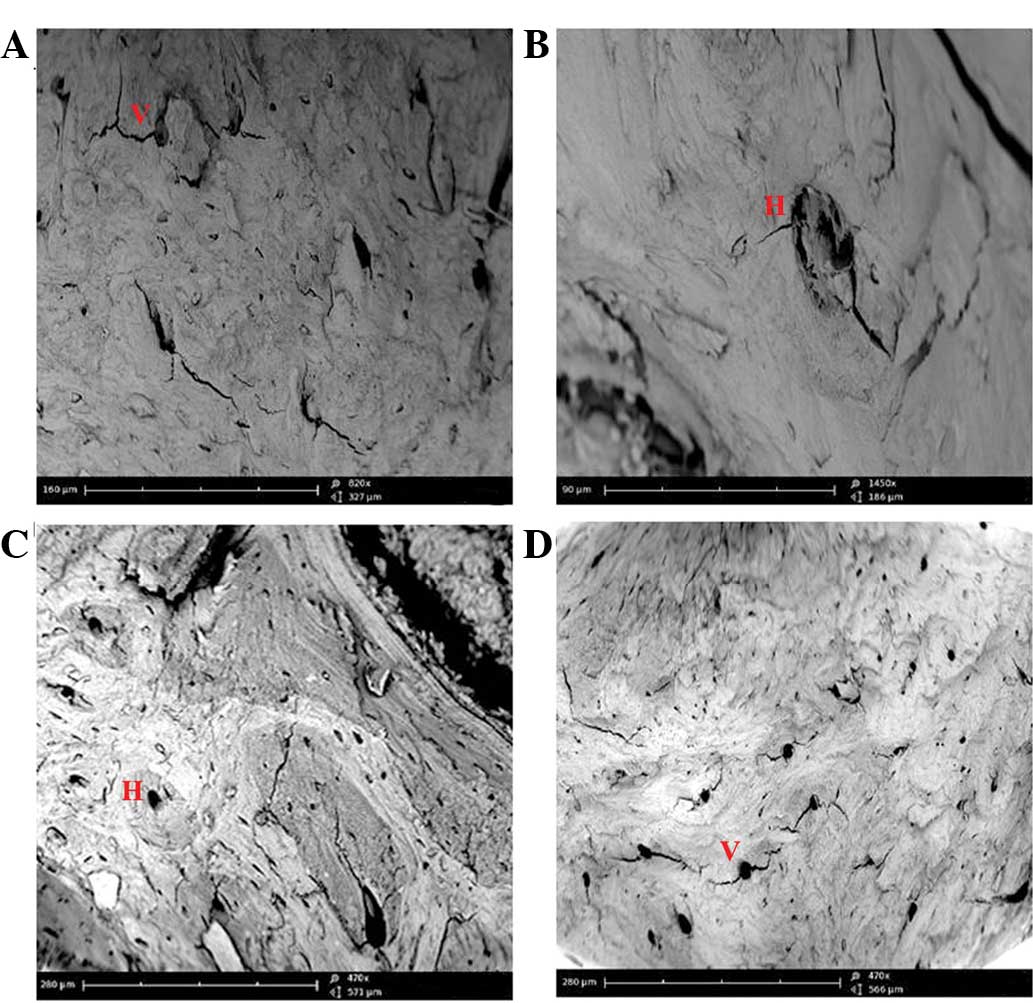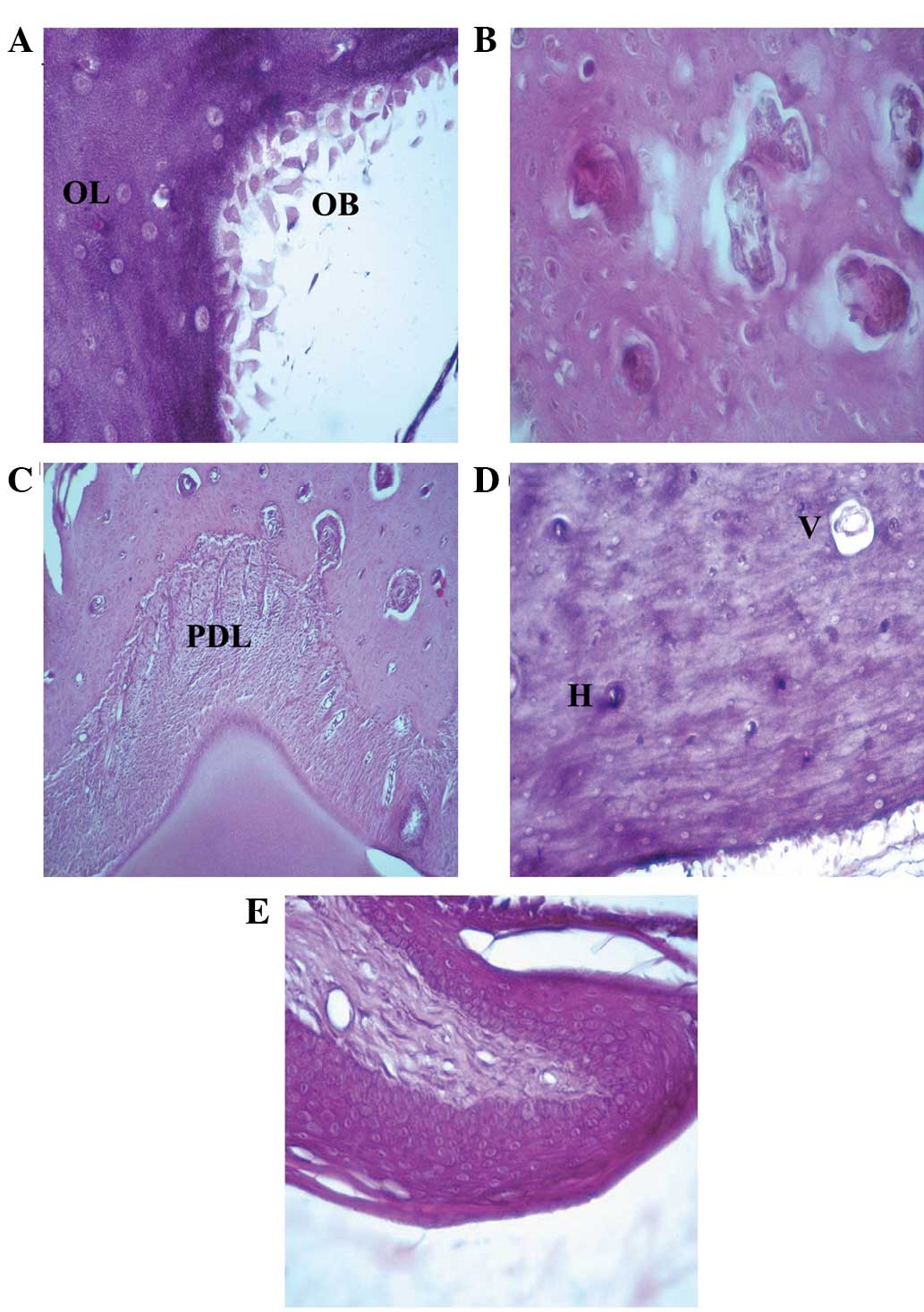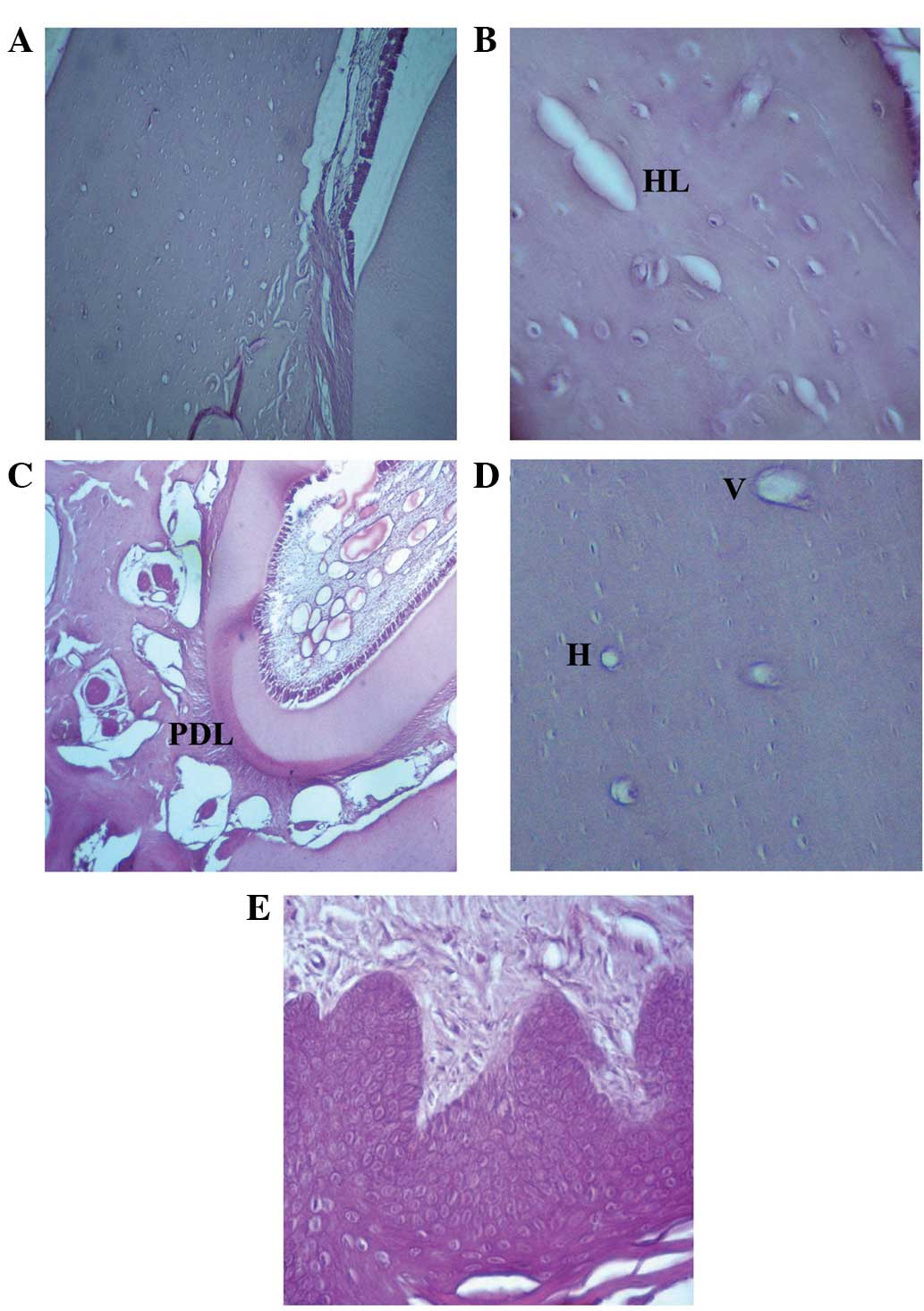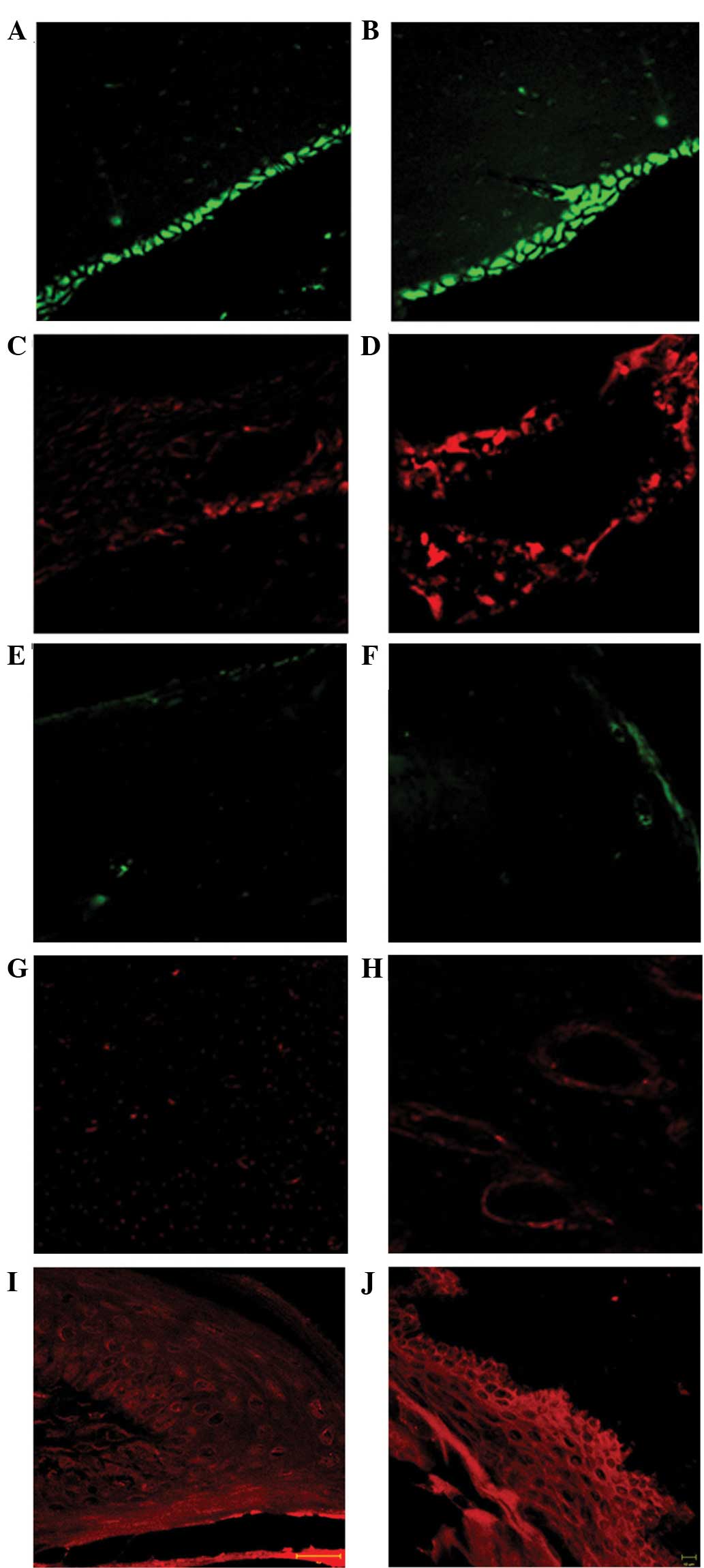|
1
|
Merigo E, Manfredi M, Meleti M, Guidotti
R, Ripasarti A, Zanzucchi E, D'Aleo P, Corradi D, Corcione L,
Sesenna E, et al: Bone necrosis of the jaws associated with
bisphosphonate treatment: A report of twenty-nine cases. Acta
Biomed. 77:109–117. 2006.PubMed/NCBI
|
|
2
|
Gutta R and Louis PJ: Bisphosphonates and
osteonecrosis of the jaws: Science and rationale. Oral Surg Oral
Med Oral Pathol Oral Radiol Endod. 104:186–193. 2007. View Article : Google Scholar : PubMed/NCBI
|
|
3
|
Migliorati CA, Schubert MM, Peterson DE
and Seneda LM: Bisphosphonate-associated osteonecrosis of
mandibular and maxillary bone: An emerging oral complication of
supportive cancer therapy. Cancer. 104:83–93. 2005. View Article : Google Scholar : PubMed/NCBI
|
|
4
|
Bertoldo F, Santini D and Lo Cascio V:
Bisphosphonates and osteomyelitis of the jaw: A pathogenic puzzle.
Nat Clin Pract Oncol. 4:711–721. 2007. View Article : Google Scholar : PubMed/NCBI
|
|
5
|
Shipman CM, Rogers MJ, Apperley JF,
Russell RG and Croucher PI: Bisphosphonates induce apoptosis in
human myeloma cell lines: A novel anti-tumour activity. Br J
Haematol. 98:665–672. 1997. View Article : Google Scholar : PubMed/NCBI
|
|
6
|
Van Beek ER, Cohen LH, Leroy IM, Ebetino
FH, Löwik CW and Papapoulos SE: Differentiating the mechanisms of
antiresorptive action of nitrogen containing bisphosphonates. Bone.
33:805–811. 2003. View Article : Google Scholar : PubMed/NCBI
|
|
7
|
Rogers MJ, Crockett JC, Coxon FP and
Mönkkönen J: Biochemical and molecular mechanisms of action of
bisphosphonates. Bone. 49:34–41. 2011. View Article : Google Scholar : PubMed/NCBI
|
|
8
|
Hughes DE, MacDonald BR, Russell RG and
Gowen M: Inhibition of osteoclast-like cell formation by
bisphosphonates in long-term cultures of human bone marrow. J Clin
Invest. 83:1930–1935. 1989. View Article : Google Scholar : PubMed/NCBI
|
|
9
|
Löwik CW, van der Pluijm G, van der
Wee-Pals LJ, van Treslong-De Groot HB and Bijvoet OL: Migration and
phenotypic transformation of osteoclast precursors into mature
osteoclasts: The effect of abisphosphonate. J Bone Miner Res.
3:185–192. 1988. View Article : Google Scholar : PubMed/NCBI
|
|
10
|
Fleisch H, Russell RG and Francis MD:
Diphosphonates inhibit hydroxyapatite dissolution in vitro and bone
resorption in tissue culture and in vivo. Science. 165:1262–1264.
1969. View Article : Google Scholar : PubMed/NCBI
|
|
11
|
Coxon FP, Helfrich MH, Van't Hof R, Sebti
S, Ralston SH, Hamilton A and Rogers MJ: Protein
geranylgeranylation is required for osteoclast formation, function
and survival: Inhibition by bisphosphonates and GGTI-298. J Bone
Miner Res. 15:1467–1476. 2000. View Article : Google Scholar : PubMed/NCBI
|
|
12
|
Marx RE: Pamidronate (Aredia) and
zoledronate (Zometa) induced avascular necrosis of the jaws: A
growing epidemic. J Oral Maxillofac Surg. 61:1115–1117. 2003.
View Article : Google Scholar : PubMed/NCBI
|
|
13
|
Costa L, Lipton A and Coleman RE: Role of
bisphosphonates for the management of skeletal complications and
bone pain from skeletal metastases. Support Cancer Ther. 3:143–153.
2006. View Article : Google Scholar : PubMed/NCBI
|
|
14
|
Mawardi H, Giro G, Kajiya M, Ohta K,
Almazrooa S, Alshwaimi E, Woo SB, Nishimura I and Kawai T: A role
of oral bacteria in bisphosphonate-induced osteonecrosis of the
jaw. J Dent Res. 90:1339–1345. 2011. View Article : Google Scholar : PubMed/NCBI
|
|
15
|
Fournier P, Boissier S, Filleur S,
Guglielmi J, Cabon F, Colombel M and Clézardin P: Bisphosphonates
inhibit angiogenesis in vitro and testosterone-stimulated vascular
regrowth in the ventral prostate in castrated rats. Cancer Res.
62:6538–6544. 2002.PubMed/NCBI
|
|
16
|
Kobayashi Y, Hiraga T, Ueda A, Wang L,
Matsumoto-Nakano M, Hata K, Yatani H and Yoneda T: Zoledronic acid
delays wound healing of the tooth extraction socket, inhibits oral
epithelial cell migration and promotes proliferation and adhesion
to hydroxyapatite of oral bacteria, without causing osteonecrosis
of the jaw, in mice. J Bone Miner Metab. 28:165–175. 2010.
View Article : Google Scholar : PubMed/NCBI
|
|
17
|
Khokher MA and Dandona P: Diphosphonates
inhibit human osteoblast secretion and proliferation. Metabolism.
38:184–187. 1989. View Article : Google Scholar : PubMed/NCBI
|
|
18
|
De Ponte FS, Favaloro A, Siniscalchi EN,
Centofanti A, Runci M, Cutroneo G and Catalfamo L: Sarcoglycans and
integrins in bisphosphonate treatment: Immunohistochemical and
scanning electron microscopy study. Oncol Rep. 30:2639–2646.
2013.PubMed/NCBI
|
|
19
|
Siniscalchi Nastro E, Cutroneo G,
Catalfamo L, Santoro G, Allegra A, Oteri G, Cicciù D, Alonci A,
Penna G, Musolino C, et al: Immunohistochemial evaluation of
sarcoglycans and integrins in gingival epithelium of multiple
myeloma patients with bisphosphonate-induced osteonecrosis of the
jaw. Oncol Rep. 24:129–134. 2010.PubMed/NCBI
|
|
20
|
Senel FC, Duman Kadioglu M, Muci E,
Cankaya M, Pampu AA, Ersoz S and Gunhan O: Jaw bone changes in rats
after treatment with zoledronate and pamidronate. Oral Surg Oral
Med Oral Pathol Oral Radiol Endod. 109:385–391. 2010. View Article : Google Scholar : PubMed/NCBI
|
|
21
|
Su J, Feng M, Han W and Zhao H: The
effects of bisphosphonate on the remodeling of different irregular
bones in mice. J Oral Pathol Med. 44:638–648. 2015. View Article : Google Scholar : PubMed/NCBI
|
|
22
|
Pautke C, Kreutzer K, Weitz J, Knödler M,
Münzel D, Wexel G, Otto S, Hapfelmeier A, Stürzenbaum S and Tischer
T: Bisphosphonate related osteonecrosis of the jaw: A minipig large
animal model. Bone. 51:592–599. 2012. View Article : Google Scholar : PubMed/NCBI
|
|
23
|
Pytlik M, Kaczmarczyk-Sedlak I, Sliwiński
L, Janiec W and Rymkiewicz I: Effect of concurrent administration
of alendronate sodium and retinol on development of changes in
histomorphometric parameters of bones induced by ovariectomy in
rats. Pol J Pharmacol. 56:571–579. 2004.PubMed/NCBI
|
|
24
|
Kapitola J, Zák J, Lacinová Z and Justová
V: Effect of growth hormone and pamidronate on bone blood flow,
bone mineral and IGF-I levels in the rat. Physiol Res. 49(Suppl 1):
S101–S106. 2000.PubMed/NCBI
|
|
25
|
O'Ryan FS and Lo JC:
Bisphosphonate-related osteonecrosis of the jaw in patients with
oral bisphosphonate exposure: Clinical course and outcomes. J Oral
Maxillofac Surg. 70:1844–1853. 2012. View Article : Google Scholar : PubMed/NCBI
|
|
26
|
Ruggiero SL, Carlson ER and Assael LA:
Comprehensive review of bisphosphonate therapy: Implications for
the oral and maxillofacial surgery patient. J Oral Maxillofac Surg.
67(Suppl 5): S12009. View Article : Google Scholar
|
|
27
|
Arco A, Favaloro A, Gioffrè M, Santoro G,
Speciale F, Vermiglio G and Cutroneo G: Sarcoglycans in the normal
and pathological breast tissue of humans: An immunohistochemical
and molecular study. Cells Tissues Organs. 195:550–562. 2012.
View Article : Google Scholar : PubMed/NCBI
|
|
28
|
Hynes RO: Integrins: Versatility,
modulation and signaling in cell adhesion. Cell. 69:11–25. 1992.
View Article : Google Scholar : PubMed/NCBI
|
|
29
|
Trimarchi F, Favaloro A, Fulle S, Magaudda
L, Puglielli C and Di Mauro D: Culture of human skeletal muscle
myoblasts: Timing appearance and localization of
dystrophin-glycoprotein complex and vinculin-talin-integrin
complex. Cells Tissues Organs. 183:87–98. 2006. View Article : Google Scholar : PubMed/NCBI
|
|
30
|
Cankaya AB, Erdem MA, Isler SC, Demircan
S, Soluk M, Kasapoglu C and Oral CK: Use of Cone-Beam Computerized
Tomography for Evaluation of Bisphosphonate-Associated
Osteonecrosis of the Jaws in an Experimental Rat Model. Int J Med
Sci. 8:667–672. 2011. View Article : Google Scholar : PubMed/NCBI
|
|
31
|
Ali-Erdem M, Burak-Cankaya A, Cemil-Isler
S, Demircan S, Soluk M, Kasapoglu C and Korhan-Oral C: Extraction
socket healing in rats treated with bisphosphonate: Animal model
for bisphosphonate related osteonecrosis of jaws in multiple
myeloma patients. Med Oral Patol Oral Cir Bucal. 16:879–883. 2011.
View Article : Google Scholar
|
|
32
|
Murakami H, Takahashi N, Sasaki T, Udagawa
N, Tanaka S, Nakamura I, Zhang D, Barbier A and Suda T: A possible
mechanism of the specific action of bisphosphonates on osteoclasts:
Tiludronate preferentially affects polarized osteoclasts having
ruffled borders. Bone. 17:137–144. 1995. View Article : Google Scholar : PubMed/NCBI
|
|
33
|
Biver E, Vieillard MH, Cortet B, Salleron
J, Falgayrac G and Penel G: No anti-angiogenic effect of clinical
dosing regimens of a single zoledronic acid injection in an
experimental bone healing site. Bone. 46:643–648. 2010. View Article : Google Scholar : PubMed/NCBI
|
|
34
|
Tanaka Y, Nagai Y, Dohdoh M, Oizumi T,
Ohki A, Kuroishi T, Sugawara S and Endo Y: In vitro cytotoxicity of
zoledronate (nitrogen-containing bisphosphonate: NBP) and/or
etidronate (non-NBP) in tumour cells and periodontal cells. Arch
Oral Biol. 58:628–637. 2013. View Article : Google Scholar : PubMed/NCBI
|
|
35
|
Lustosa-Pereira A, Garcia RB, de Moraes
IG, Bernardineli N, Bramante CM and Bortoluzzi EA: Evaluation of
the topical effect of alendronate on the root surface of extracted
and replanted teeth. Microscopic analysis on rats' teeth. Dent
Traumatol. 22:30–35. 2006. View Article : Google Scholar : PubMed/NCBI
|
|
36
|
Lekic P, Rubbino I, Krasnoshtein F,
Cheifetz S, McCulloch CA and Tenenbaum H: Bisphosphonate modulates
proliferation and differentiation of rat periodontal ligament cells
during wound healing. Anat Rec. 247:329–340. 1997. View Article : Google Scholar : PubMed/NCBI
|
|
37
|
Yoshida M and Ozawa E: Glycoprotein
complex anchoring dystrophin to sarcolemma. J Biochem. 108:748–752.
1990.PubMed/NCBI
|
|
38
|
Ervasti JM and Campbell KP: A role for the
dystrophin-glycoprotein complex as a transmembrane linker between
laminin and actin. J Cell Biol. 122:209–231. 1993. View Article : Google Scholar : PubMed/NCBI
|
|
39
|
Campbell KP: Three muscular dystrophies:
Loss of cytoskeleton-extracellular matrix linkage. Cell.
80:675–679. 1995. View Article : Google Scholar : PubMed/NCBI
|
|
40
|
American Association of Oral and
Maxillofacial Surgeons (AAOMS): Office Anesthesia Evaluation Manual
(8th). AAOMS, Rosemont, IL, USA: 1899–1900. 2011.
|


















